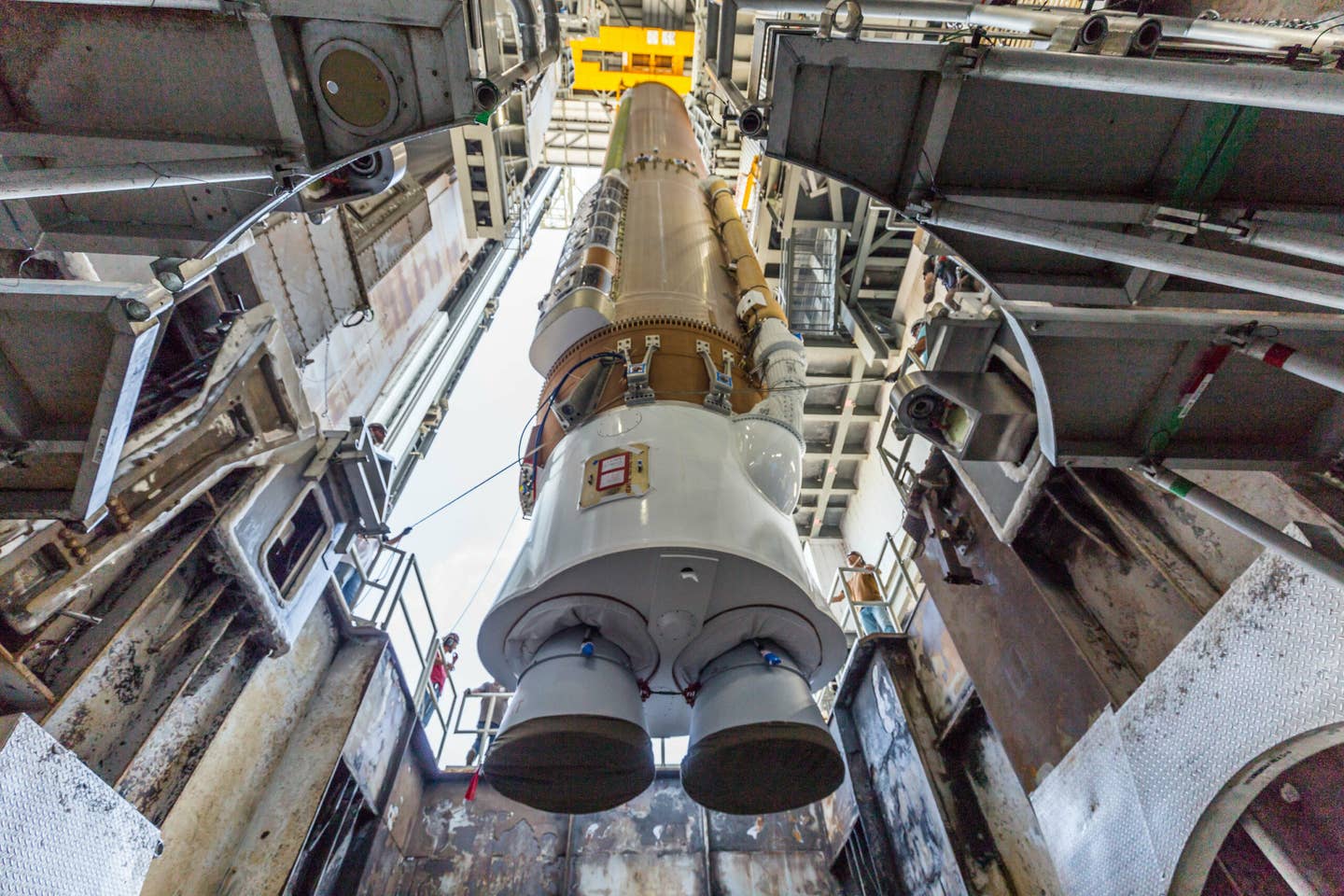
USSF-12 consists of SSC’s Geosynchronous Earth Orbit (GEO) Wide Field of View (WFOV) Testbed and the Space Test Program’s (STP) USSF-12 Ring “rideshare spacecraft.” [Courtesy: U.S. Space Force]
U.S. Space Force's (USSF) Space System Command (SSC) will soon launch two payloads into geosynchronous orbit via a United Launch Alliance (ULA) Atlas V 541 rocket for a mission it says will demonstrate the performance of an infrared sensor, conduct a variety of experiments, and validate the ability to host multiple missions on one structure.
The launch is set to take place June 29 from Cape Canaveral Space Force Station, Florida.
The mission, dubbed USSF-12, consists of SSC's Geosynchronous Earth Orbit (GEO) Wide Field of View (WFOV) Testbed and the Space Test Program’s (STP) USSF-12 Ring "rideshare spacecraft" that has a ring-based structure capable of accommodating multiple auxiliary payloads.
“Our GEO WFOV Testbed can simultaneously perform strategic missions, such as missile warning and battlespace awareness, as well as tactical missions directly supporting the warfighter, by continuously monitoring up to one-third of the Earth's surface with just a single sensor,” Col. Heather Bogstie, senior materiel leader for Resilient Missile Warning, Tracking, and Defense in SSC’s Acquisition Delta, said in a statement.
The WFOV testbed, which includes an advanced missile warning system, had been originally scheduled to launch in the spring, C4ISRNET reported.
The testbed is the mission's primary payload and is an Overhead Persistent Infrared (OPIR) program demonstration in geosynchronous orbit aimed at proving the effectiveness of space sensing technology in addressing emerging threats from nearpeer adversaries, SSC said.
"This testbed is a critical technology component of the Missile Warning, Tracking, and Defense (MW/MT/MD) architecture in which SSC is partnering with the Space Development Agency (SDA) and the Missile Defense Agency (MDA) to rapidly deliver an integrated system of satellites," it added.
The mission is expected to include a six-hour ascent before the launch of the WFOV and STP satellites about 22,000 miles above the equator, ULA said. The Atlas V rocket will stand about 196 feet tall and have a liftoff mass of about 1.18 million pounds, it said.
Buildup of the rocket was completed June 6 in preparation for the launch, ULA said. Testing of the rocket systems, and arrival of the encapsulated payload for integration atop the rocket is expected to be completed by mid-June.

Sign-up for newsletters & special offers!
Get the latest FLYING stories & special offers delivered directly to your inbox






